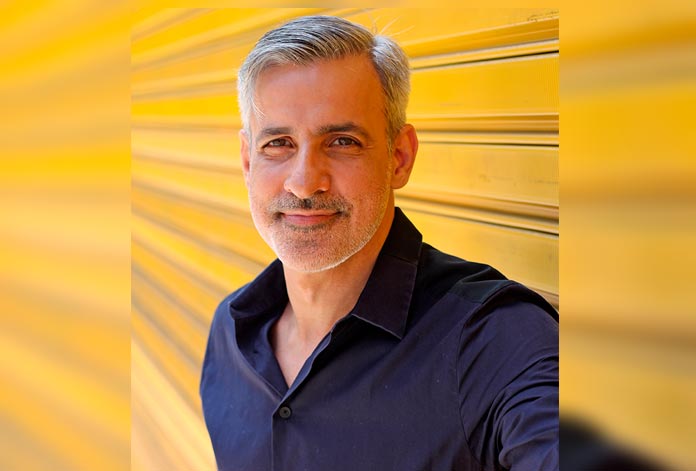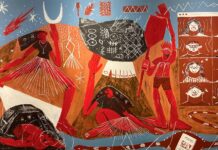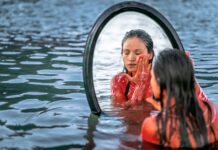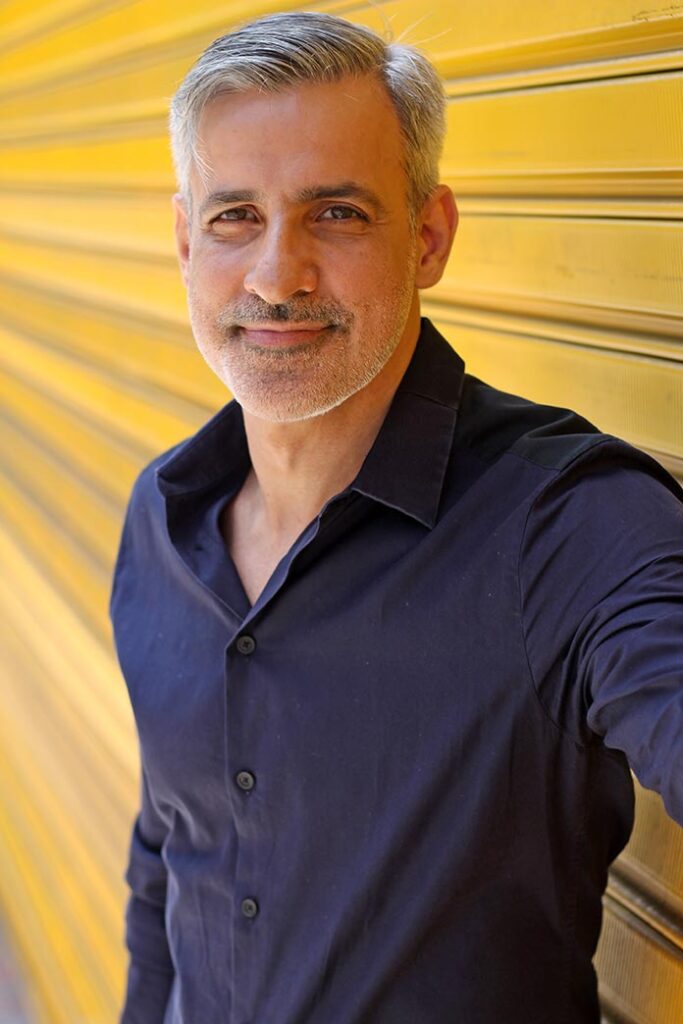
The general curator of the 60th Venice Biennale (2024), Adriano Pedrosa, is the first Latin American to assume such a position, driven by a trajectory of radical changes. As a young man he studied law and economics, but soon found himself interested in art and, from there, began his story as an artist, critic, curator and museum director. It all starts when your boyfriend does his master's degree in London and he spends a few months there. “Every day I went to the National Gallery where I followed the tours of guided tours of one or two hours each”. The unique experience was the trigger for him to discover masterpieces, listen to critical comments and think about art. Over time, this intimacy with art turns into passion. As there was no time to waste, he buys books and art magazines chosen by himself, and sets a course for his career.
Back in Brazil, at the end of the 80s, he took courses at the Escola de Artes Visuais do Parque Lage, in Rio, studying painting with Daniel Senise, Milton Machado, Beatriz Milhazes, Charles Watson and art history with Viviane Matesco. In 1992 he went to the United States, took a master's degree in art at California Institute of the Arts, after After five years, he returned to Brazil and exhibited at Funarte's Macunaíma project and at Centro Cultural São Paulo, also in the early 1990s, where he showed work with an almost ethnographic profile that brought the memory of the queer body, made with towels stolen from saunas . “Those white towels, folded on a shelf, and the title of the work indicated where they came from, I remember that one of them was from For Friends, a famous sauna in São Paulo that still exists today."
These are experimental drawings from this period, one of which is part of the MAM/SP collection, and which bears the title Drawing made with the left hand by a right-handed person, in which he wrote the word “faggot” or “faggot” over and over again. Adriano also exhibited twice at Galeria Luisa Strina, in 1996 and 1999, and two years before, he was invited to the exhibition Mirrors and Shadows, curated by Aracy Amaral at MAM/SP.
With his master's degree, it became clearer to him that his interest was in texts and curation. In 1997, when he was still in the United States, he was called by Paulo Herkenhoff, curator of the 24th São Paulo Biennial, to be deputy curator. Then, he left Los Angeles, moved to the capital of São Paulo and later became co-curator of the 27th Bienal de São Paulo, 2006, with critic Lisette Lagnado. Five years later he became the curator of the Istanbul Biennale, researching the Arab world. As he comments, he began to circulate internationally, writing for magazines such as Frieze e artforum. Amidst so many invitations, in 2005 he took over the curatorship of the exhibition Insite, in San Diego (USA) and at the Tijuana Cultural Center (Cecut, Mexico). In 2014 came the invitation that really excited him, to be the artistic director of São Paulo Museum of Art (Masp).
Pedrosa assimilates the art system with a creative sense, sometimes using the “framework” of other exhibitions, as he puts it. Now, at the 60th Venice Biennale he chooses the theme Stranieri Ovunque – Foreigners Everywhere (foreigners everywhere), which alludes to the controversial Panorama of Brazilian Art (MAM/SP) in 2009. The event, curated by him, showed the influence of Brazilian production on works by foreign artists. The almost unpronounceable title, Mamõyguara opá mamõ pupé, comes from the old Tupi and that is, precisely, foreigners everywhere, and which now reappears at the Venice Biennale. The theme was borrowed from the work of the collective Claire Fontaine, which consists of neon lights displaying the same text, in different languages.
We are renaming the two buildings that now make up Masp. The new one will be called Pietro Maria Bardi and is scheduled to open at the end of 2024 and is connected to the current building, Lina Bo Bardi, they will be connected by an underground tunnel”
A quote from Gramsci warns: “The old world is dying, a new one is taking time to be born, and in this light of darkness monsters emerge.” I ask Pedrosa if the two current media and genocidal wars, which terrify the planet, will be reflected in this edition. And also what can be expected from the participating artists to better understand the moment we live in. The answer came instantly: “I’m not yet authorized to talk about what’s in this Biennale.” However, he was able to comment on what was circulating on the internet about the presence of Palestinians at the event.
“The Venice Biennale is divided into three large segments: the first is the Central Pavilion where the international exhibition, considered the most important exhibition, of which I am the curator. The second concerns the countries that exhibit in national pavilions, whose exhibitions are organized by the countries themselves. The third is the collateral events, which happen all over Venice, and I select them from entries from all over the world.”
Pedrosa comments that interested parties register in this segment to obtain the participation seal within the Biennale. Of the many proposals received, he chose 30. One of the submitted projects was for a Palestine museum in the United States, which was not selected. However, there was another proposed work, also from Palestine, which was accepted. “The rejected project came to light on the internet saying that there had been a boycott of Palestinian artists, but they didn't know that the other had been selected. In general, the list of events is published a month before the Biennale opens, it would be in March, but this time it was published in October. There is a project there called Anchor in the Lanscape, organized by Artists and Allies of Hebron. Hebron is a city in the West Bank, Palestine.”
This year's edition is divided into two main groups, the Historical core, which evokes in its title the Historical Center of the 24th São Paulo Biennial, and the Contemporary core. In the first, Pedrosa works with Sofia Gotti, an Italian curator who lives in the United Kingdom and Italy. In the second group, he has Amanda Carneiro, assistant curator at Masp. “I also work with a Brazilian designer, Paula Tinoco, from the Campo studio, and the architect Juliana Ziebell, both of whom have done many projects at Masp”. From New York, the team includes Karen Marta and Todd Bradway, “who help me with the editorial and who also worked on the MASP books. There are also many writers from the Global South, writing texts about each of the artists in the exhibition.”
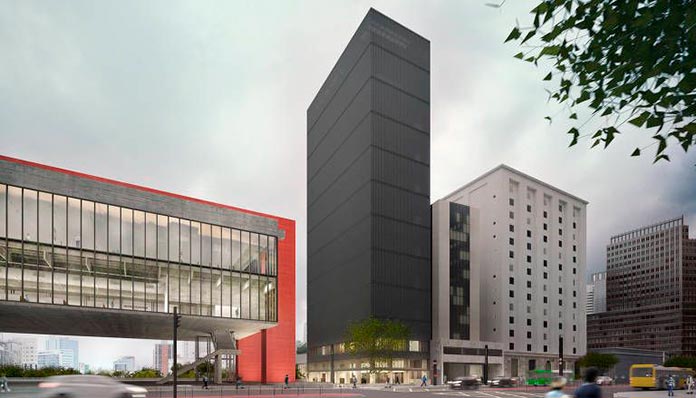
The two cores, the historical and the contemporary, focus on four subjects/themes. The first is that of the foreigner, exile, refugee, immigrant, diasporic. “They are artists who migrated, traveled, and lived here and there. Above all, artists from the Global South who traveled through the North and vice versa. In this sense, they are not necessarily artists who deal with issues of immigration and the diaspora as a theme, as sometimes they even have more formal work.”
The second subject/themes unfolds the idea of the strange and foreign to the queer “This comes from my own experience. I myself have been a foreigner at various times in my life, living abroad and traveling, I identify as queer. Thus, there will be a large presence of queer, trans and non-binary artists in the exhibition.” The third subject/themes belongs to the artist outsider, that artist who operates in circuits and contexts different from modern, contemporary and academia. Pedrosa understands that the presence of the so-called popular artist is very important, so much so that he appears on Masp's programming, despite being often marginalized in the art circuit. “It is interesting to see how several so-called popular artists already participated in the Venice Biennale in the 1960s, such as José Antônio da Silva, Maria Auxiliadora, Heitor dos Prazeres and Madalena Two saints Reinbolt, always in the Brazilian pavilion.”
O The last theme/dirt is the indigenous people, who are often treated as foreigners in their own territory. “The four segments of the contemporary core reflect our work at Masp. At the end of 2023, we are exposing the Indigenous Stories and, next year, we will work on the Stories of LGBTQIA+ Diversity or, in English, queer stories”. In addition to the Venice Biennale, the curator is also involved with changes at Masp, where he is the directorartistic director since 2014. “We are renaming the two buildings that now make up Masp. The new one will be called Pietro Maria Bardi and is scheduled to open at the end of 2024 and is connected to the current building, Lina Bo Bardi, they will be connected by an underground tunnel”. The marathon of events, which involves Adriano Pedrosa around the world, proves that he doesn't stop. Almost on the eve of the inauguration of the 60th Venice Biennale, the English magazine Art Review put it on the list of the 100 most influential people in the world. ✱

